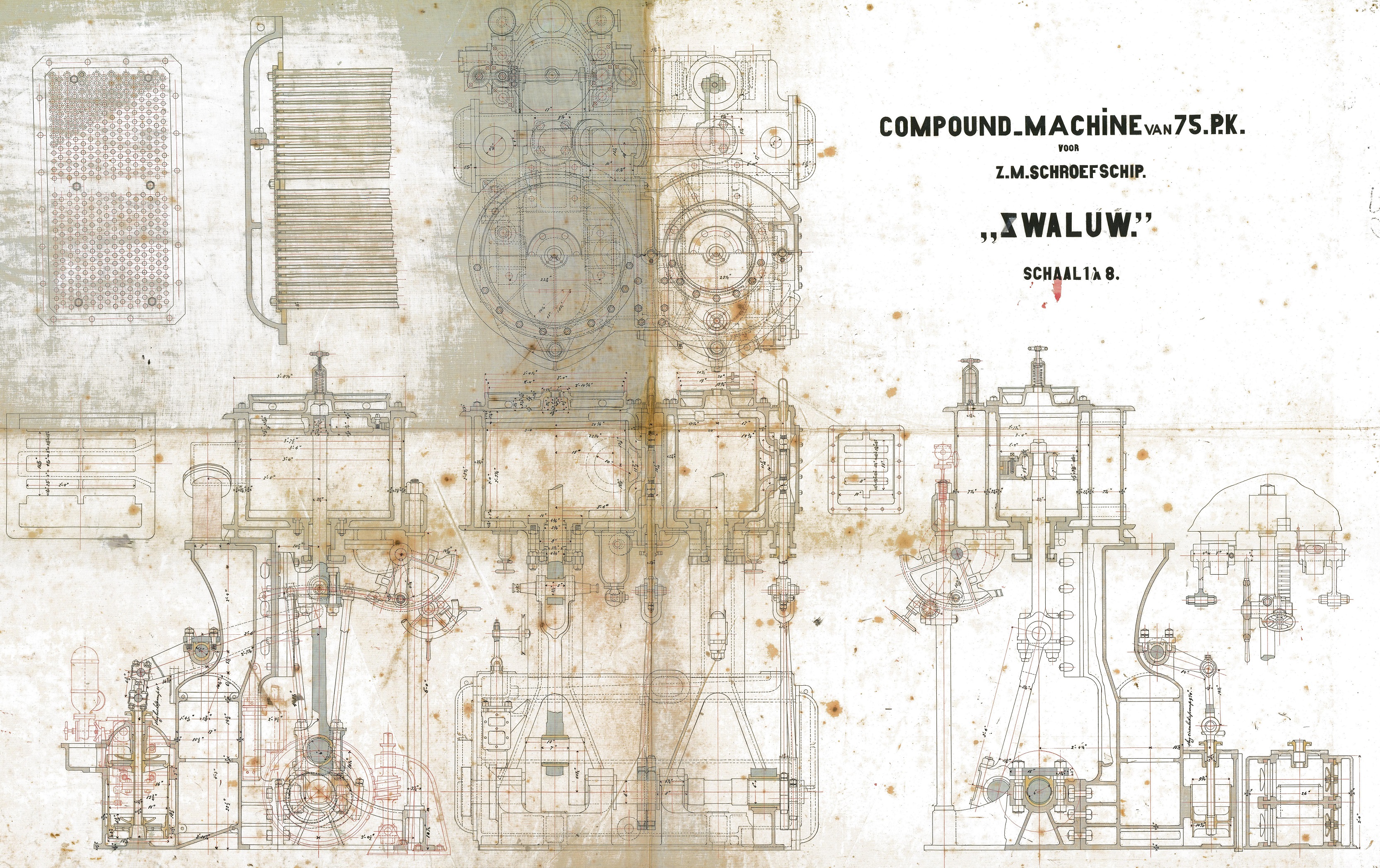Original drawing archive engine and boilerplant Kon. Mij. De Schelde (Town Archive Vlissingen T506)
An item reported that a new expedition towards South Netherlands New Guinea was planned to investigate the so-called Sneeuw-gebergte [Maoke Mountains, Papua, Indonesia] near the Oostbaai and Oetoemboewé rivers. The Dutch government supported the 8 months during expedition with an important subsidy. The Maatschappij ter bevordering van het natuurkundig onderzoek der Nederlandsche Koloniën at Amsterdam, Netherlands and the Indisch Comité voor wetenschappelijke onderzoekingen at Batavia, Dutch East Indies were the promotors. In the meantime came the former Goverment Navy ship Zwaluw available as accommodation ship for the expedition. After she was condemned for active service, was she used as survey vessel in the Oostervaarwater off Surabaya, Dutch East Indies and since then laid up at the naval establishment at Surabaya to be converted into a pilot station ship. This conversion was speed up and she was prepared for the expedition. The steam engines, shafts and screw were removed with the steam boiler remaining to be used as water reservoir. The former engineroom became a cargo hold of around 40 cubic metres for storing victuals. The former officers longroom and officer cabins were united with the crew accommodation affront into one large accommodation for the coolies. In the aft ship were the cabins for the expedition members, the commanding officer of the detachment and if necessary a native doctor. The large cabin was decreased and converted into a laboratory. The former gamelle and accommodation cabin were now to be used as dark rooms for photography and apothecary. The dark rooms were fitted out with a water pipe. The guard detachment was located on the upper deck below the poop. The tent was replaced by a roof of corrugated iron. Iron wire mesh and nets were used to prevent boarding. A petrol gas incandescent light device Washington system was used as an extra protection during the night. All doors, portholes and hoods were fitted out with brass wire mesh to prevent mosquito entering the accommodations. A detachment commanded by 1st infantry lieutenant C. Schultz and consisting of 2 European and 2 native sergeants, 2 native corporals, 1 bugler, 37 native soldiers and a nurse. To this added were 3 mandoers and 60 convicts added. Leader of the expedition was mr. H.A. de Lorentz. She was to be towed by the Valk as far as possible upstream and even further by the Spits.(1)
Note
1. Building ordered by the Department of Koloniën to be built by the Kon. Mij. De Schelde, Vlissingen, Netherlands on 17 March 1881. Laid down with yardnumber 29 on 21 April 1881, in the thrushes on 17 September 1881, plating fitted on 31 December 1881, launched on 20 February 1882, trials while berthed on 14 June 1882, official trial on 29 June 1882 and delivered on 17 July 1882. Armament consisted of 2-5cm/1.96” guns. Crew numbered 35 men. Dimensions 38,40 (between perpendiculars)-43,36 (over all) x 6,10 x 3,51 (gold x 3,20 metres or 126’0”x 20;0”x 11’6”.Speed 10,5 miles. One boiler and one 2 cylinder compound surface condensing engine with 30 ihp (design).

